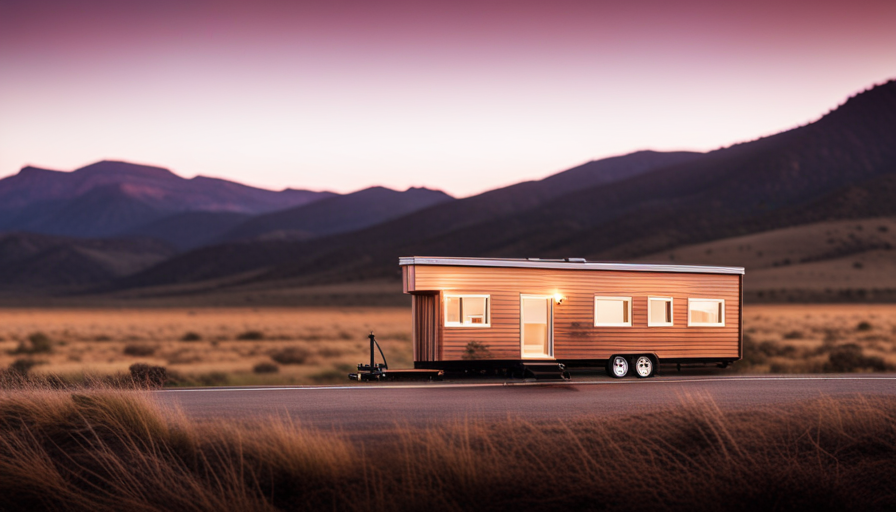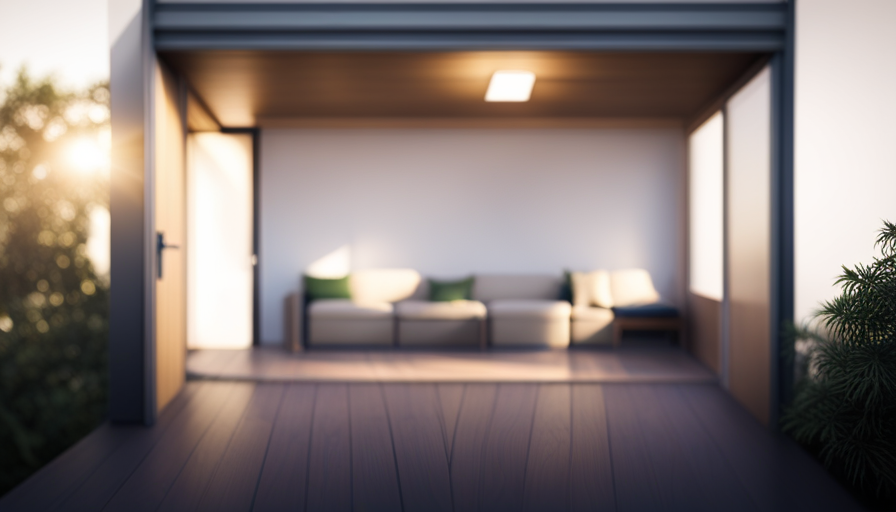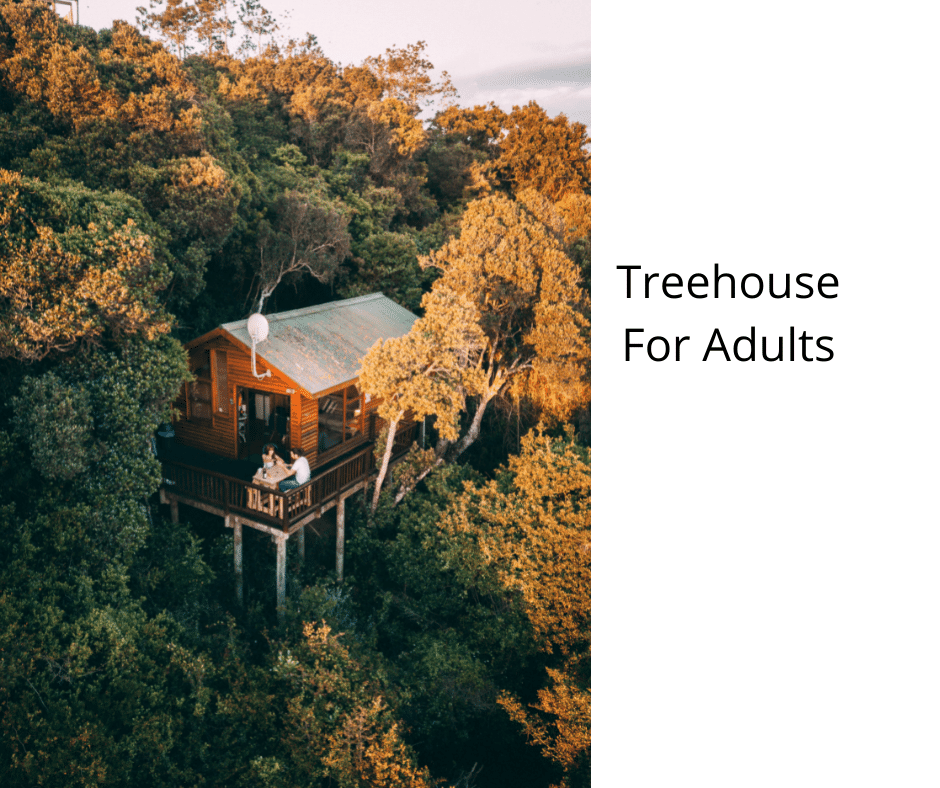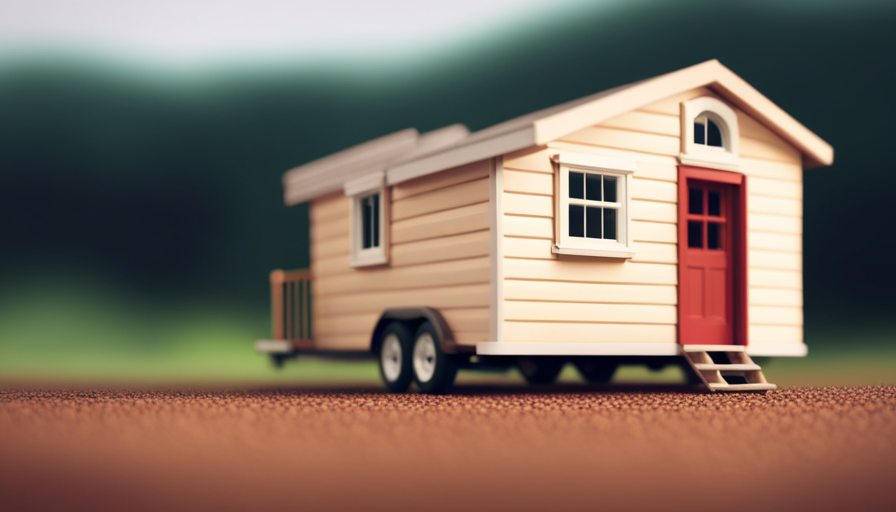Get ready for an amazing revelation! I’m about to share the secret that will unleash the full potential of your mobile tiny home. It all boils down to the axles, folks! Yes, the number of axles can either boost or impede your portable haven.
In this article, we’re diving deep into the world of tiny house axles to uncover the secrets that will ensure a smooth and safe journey. We’ll explore everything from weight distribution and road regulations to factors that determine the perfect axle configuration.
When it comes to towing your tiny house, precision is paramount. That’s why we’ll discuss size and weight considerations, as well as your towing vehicle’s capacity. We won’t stop there though – proper alignment and suspension play a crucial role too.
So buckle up and get ready for an analytical adventure through the realm of axles. With our technical expertise at hand, you’ll be equipped with all the knowledge needed to find the ideal axle configuration for your beloved tiny house on wheels.
Let’s roll!
Key Takeaways
- The number of axles needed for a tiny house on wheels depends on factors such as weight distribution, road regulations, and terrain conditions.
- Multiple axles can provide benefits in terms of stability, balance, and weight distribution, but they also come with additional challenges and costs.
- It is important to carefully plan and consider engineering expertise when designing a tiny house with multiple axles, including reinforcing the foundation or subflooring.
- Collaboration with professionals, including tiny house builders and towing experts, is crucial for determining the right axle configuration, complying with regulations, and ensuring a safe and secure journey.
Understanding the Weight Distribution of a Tiny House
Now, imagine you’re standing outside a tiny house, and you notice how the weight is perfectly distributed across the structure. When it comes to building a tiny house, there are several factors to consider regarding weight distribution. The importance of proper weight distribution cannot be overstated, as it directly impacts the stability and safety of the structure.
One of the main factors to consider is the location of heavy items within the tiny house. Placing heavier objects near the center and lower part of the structure helps maintain balance and prevents excessive strain on certain areas. Additionally, considering the positioning of amenities such as water tanks and appliances can also contribute to an even distribution of weight.
Another factor that plays a crucial role in weight distribution is material selection. Using lightweight materials for construction can help reduce overall weight and ensure better balance throughout the tiny house.
Properly distributing weight within a tiny house is essential not only for stability but also for complying with road regulations and axle requirements. By adhering to these regulations, you can ensure safe transportation without compromising structural integrity.
Understanding factors related to weight distribution in a tiny house is paramount for its stability and safety during movement. Now let’s delve into road regulations and axle requirements without neglecting this aspect.
Road Regulations and Axle Requirements
First things first, let’s talk about how you can ensure your adorable little abode meets all the road regulations and has the right number of wheels to get you moving.
When it comes to road safety, legal requirements play a vital role in determining the number of axles needed for your tiny house. These regulations aim to ensure that your tiny home is not only safe for you but also for other drivers on the road.
Road safety standards vary from state to state, so it’s crucial to familiarize yourself with the specific requirements in your area. In general, most states require tiny houses on wheels to have at least two axles. However, some states may have additional rules depending on factors such as weight distribution and overall length.
To determine the exact number of axles required for your tiny house, consider factors such as its total weight and length. Consulting with a professional engineer or contacting local authorities can provide valuable insights into meeting these requirements.
By adhering to road regulations and understanding axle requirements, you can ensure that your tiny house is legally compliant and ready for travel.
Now let’s delve into the factors you should consider when determining the number of axles needed for your cozy abode without compromising its structural integrity.
Factors to Consider When Determining the Number of Axles
When deciding on the number of axles for your cozy abode, there are several factors you should consider to ensure a safe and compliant journey. To help you make an informed decision, here are some key points to keep in mind:
-
Weight Distribution: Distributing the weight of your tiny house evenly across multiple axles is crucial for stability and control while towing. By spreading the load, you can minimize the risk of swaying or fishtailing during transit.
-
Towing Capacity: It’s essential to know the towing capacity of your vehicle and choose the appropriate number of axles accordingly. Exceeding the recommended limits can put excessive strain on both your vehicle’s engine and brakes, compromising safety.
-
Road Conditions: Consider where you plan to travel with your tiny house. Different road conditions may require additional axles to provide better traction and maneuverability, especially when encountering steep inclines or rough terrains.
-
Legal Requirements: Research local regulations regarding axle requirements for towing structures like tiny houses. Certain jurisdictions may impose specific rules based on size and weight restrictions.
Considering these factors will help determine how many axles your tiny house needs for a smooth journey ahead. Next, we’ll delve into examining the size and weight of the tiny house itself without missing a beat.
Size and Weight of the Tiny House
To ensure a smooth and stress-free journey, it’s important to consider the size and weight of your cozy abode. Understanding the weight capacity and trailer size requirements is crucial when determining the number of axles needed for your tiny house.
The size of your tiny house will directly impact its weight, which in turn affects the load-bearing capabilities of the axles. It is essential to accurately measure and calculate the dimensions of your tiny house, including the length, width, and height. Additionally, you should take into account any additional features or modifications that may add extra weight.
By understanding the weight capacity of each axle and comparing it to the estimated weight of your tiny house, you can determine if multiple axles are necessary. If your tiny house exceeds the maximum weight capacity for a single axle trailer, it may be advisable to opt for a tandem or triple axle configuration. These configurations distribute the weight more evenly across multiple axles, providing better stability and reducing strain on individual components.
Considering these factors will help ensure that your tiny house is safely transported without compromising its structural integrity or causing damage to other vehicles on the road. With an understanding of how size and weight affect axle requirements, we can now transition into discussing another important aspect: towing vehicle’s capacity.
Towing Vehicle’s Capacity
Make sure you have a strong and capable towing vehicle that can handle the weight of your dream home on wheels, giving you peace of mind as you embark on your adventurous journey. When it comes to towing a tiny house, understanding the towing vehicle’s capacity is crucial. The weight distribution of the tiny house plays a significant role in determining how many axles are needed.
To determine the appropriate towing vehicle, consider factors such as the gross vehicle weight rating (GVWR) and tongue weight capacity. The GVWR represents the maximum weight the vehicle can safely carry, including passengers, cargo, and trailer tongue weight. It is essential to choose a towing vehicle with a high enough GVWR to accommodate both the tiny house and any additional items you plan to bring along.
Additionally, ensure that your chosen towing vehicle has sufficient tongue weight capacity. The tongue weight refers to the downward force exerted on the hitch ball by the tiny house’s coupler. A higher tongue weight capacity allows for better stability while towing.
Consider consulting your towing vehicle’s manufacturer for specific guidelines and recommendations based on its capabilities.
Understanding these aspects of your tow vehicle’s capacity will help you make an informed decision about how many axles are needed for your tiny house. This knowledge will also contribute to ensuring safe and smooth travels as you navigate different types of terrain and road conditions in your mobile dwelling adventure.
Type of Terrain and Road Conditions
When considering the towing capacity of a vehicle for hauling a tiny house, it’s important to also take into account the type of terrain and road conditions that you’ll encounter during your travels. This aspect plays a crucial role in determining how many axles are needed for your tiny house.
-
Road Conditions: The condition of the roads you plan to travel on can greatly impact the stability and maneuverability of your tiny house. Uneven or unpaved roads may require additional axles to provide better weight distribution and enhance overall control.
-
Terrain Suitability: Different terrains pose different challenges for towing a tiny house. Steep inclines, rough off-road trails, or slippery surfaces demand increased traction and stability, which can be achieved by having additional axles.
-
Weight Distribution: The number of axles affects how weight is distributed across your trailer’s frame. Extra axles allow for distributing the load more evenly, reducing stress on each individual axle and improving overall safety.
Considering these factors alongside your towing vehicle’s capacity will help determine whether multiple axles are necessary for optimal performance when towing a tiny house through various road conditions and terrains.
With this understanding of road conditions and terrain suitability, we can now explore the benefits of having multiple axles in our next section about the benefits of having multiple axles.
Benefits of Having Multiple Axles
You’ll be delighted to discover the numerous advantages that come with having multiple axles. Not only do they provide improved stability and balance, but they also offer several other benefits. One significant advantage is better weight distribution. With multiple axles, the weight of the tiny house can be evenly distributed, reducing strain on individual axles and tires. This ensures a smoother ride and minimizes the risk of tire blowouts or axle failures.
Another advantage is increased towing capacity. Multiple axles allow for a higher total weight capacity, making it easier to tow larger tiny houses or carry additional cargo. This is particularly useful if you plan on frequently moving your tiny house or traveling long distances.
To illustrate these advantages further, consider the following table:
| Advantages of Multiple Axles | |
|---|---|
| Better Weight Distribution | Reduced Strain on Individual Axles |
| Increased Towing Capacity | Ability to Tow Larger Tiny Houses |
| Smoother Ride | Minimized Risk of Tire Blowouts |
With these benefits in mind, it’s clear that having multiple axles greatly enhances the overall performance and safety of a tiny house. In the next section, we will explore how multiple axles contribute to improved stability and balance without sacrificing maneuverability or ease of towing.
Improved Stability and Balance
Having multiple axles greatly enhances stability and balance, ensuring a smooth and secure ride for your tiny house. The improved stability comes from the increased surface area in contact with the road, which helps distribute the weight more evenly. This prevents excessive swaying or rocking motion when traveling on uneven terrain or during strong winds.
Additionally, having multiple axles allows for better weight distribution throughout the trailer, minimizing stress on individual components and reducing the risk of damage. The additional axles provide added support and stability to prevent excessive movement while driving. Improved balance reduces the chances of tipping over or losing control during turns or sudden maneuvers.
Distributing the weight across multiple axles minimizes strain on tires, reducing wear and tear. The extra axles help absorb shock from bumps in the road, providing a smoother ride for occupants. Enhanced stability also contributes to increased safety by reducing the risk of accidents caused by instability.
With improved stability and balance, it becomes easier to maneuver your tiny house through tight spaces or narrow roads. The next section will explore how having multiple axles enhances maneuverability even further.
Enhanced Maneuverability
To make navigating tight spaces and narrow roads a breeze, having multiple axles greatly enhances your ability to maneuver your compact dwelling. With improved maneuverability, you can easily navigate through challenging terrains and sharp turns.
The addition of extra axles allows for a smaller turning radius, enabling you to smoothly negotiate corners without any difficulties.
By distributing the weight of your tiny house across multiple axles, you achieve better weight distribution. This is crucial for maintaining stability while on the move. With each axle carrying a portion of the load, the pressure on each individual tire is reduced, minimizing wear and tear and increasing overall durability.
Furthermore, enhanced maneuverability goes hand in hand with better weight distribution. When making sharp turns or trying to park in limited spaces, having multiple axles ensures that your tiny house remains balanced throughout the process. This prevents any excess strain on specific areas of the structure.
With improved maneuverability and better weight distribution achieved through multiple axles, you can confidently travel with your tiny house knowing that it is able to handle various road conditions and maintain stability during maneuvers.
Better Weight Distribution
Imagine effortlessly gliding down the road with your compact dream home, feeling the reassuring stability and balanced weight distribution as you navigate every turn. When it comes to tiny houses, better weight distribution plays a crucial role in ensuring a smooth and safe towing experience.
By distributing the weight evenly across multiple axles, we can optimize towing capacity and minimize the risks associated with overloading or unbalanced loads. Weight distribution is key in preventing swaying or fishtailing while on the move. Having multiple axles allows for a more even spread of the tiny house’s weight, reducing stress on any single point of contact. This results in improved handling and enhanced maneuverability, making it easier to control your tiny house during turns, braking, and acceleration.
Furthermore, better weight distribution also increases the overall towing capacity of your vehicle. By spreading out the load over multiple axles, you can effectively distribute the weight within legal limits while maximizing payload capacity. This ensures that you’re not exceeding any safety guidelines or putting unnecessary strain on your tow vehicle.
However, despite these advantages, there are limitations and challenges associated with using multiple axles for tiny houses. Transitioning into discussing these limitations without explicitly saying ‘step,’ it’s important to consider factors such as increased complexity in design and maintenance costs when deciding how many axles are needed for your specific tiny house design.
Limitations and Challenges of Multiple Axles
Get ready to face some hurdles and overcome obstacles when it comes to using multiple axles for optimal weight distribution in your compact dream home on wheels.
Here are some limitations of multiple axles and the challenges you may encounter with weight distribution:
-
Towing Capacity: Adding more axles increases the weight of your tiny house, which can exceed the towing capacity of your vehicle. This limitation may require you to upgrade your towing equipment or consider alternative transportation options.
-
Maneuverability: Multiple axles can limit the maneuverability of your tiny house, making it difficult to navigate tight turns or narrow roads. You may need to plan your routes carefully and avoid areas with restricted access.
-
Tire Wear: Uneven weight distribution can lead to increased tire wear on specific axles, requiring regular maintenance and potential replacements. Balancing the load across all axles is essential for preserving tire longevity.
-
Suspension System: The additional weight from multiple axles puts strain on the suspension system of your tiny house. Upgrading your suspension components might be necessary to ensure a smooth and stable ride.
As you tackle these limitations and challenges with weight distribution, be prepared for increased cost and complexity in building and maintaining a tiny house with multiple axles.
Increased Cost and Complexity
Facing the reality of increased cost and complexity, you’ll find yourself navigating a world full of intricacies when it comes to creating your dream home on wheels with multiple axles. The decision to add more axles to a tiny house is not one to be taken lightly, as it brings with it a host of construction challenges.
First and foremost, the increased number of axles means higher material costs for the additional frames, suspension systems, and tires required. Additionally, the complexity of building a tiny house on multiple axles requires careful planning and engineering expertise to ensure structural integrity and proper weight distribution.
Moreover, constructing a tiny house with multiple axles can also lead to other challenges. The added weight from the extra axles may require reinforcing the foundation or subflooring to support the increased load. This can further drive up construction costs and add another layer of complexity to the project.
While having multiple axles can provide benefits such as improved stability and weight distribution for a tiny house on wheels, it is essential to consider the increased cost and construction challenges that come along with this choice. By carefully weighing these factors, you can make an informed decision about whether multiple axles are suitable for your tiny house design without risking potential overloading in subsequent sections about ‘potential for overloading’.
Potential for Overloading
Beware the looming danger of exceeding weight limits, as your dream home on wheels may turn into a potential ticking time bomb. While designing and constructing a tiny house, it’s crucial to consider the hidden dangers associated with overloading.
The structural integrity of your mobile abode depends heavily on distributing the weight evenly across its axles. Overloading your tiny house can lead to serious consequences. Excessive weight puts immense strain on the axles, tires, and suspension system, potentially compromising their durability and performance. This not only increases maintenance costs but also jeopardizes the safety of you and other road users.
To avoid these issues, it’s essential to carefully plan and monitor your tiny house’s weight distribution. Consider factors such as furniture placement, material choices, and equipment selection that can contribute to unnecessary heaviness. Regularly inspecting your tiny house for signs of stress or damage will help identify potential problems before they escalate.
Transitioning into the subsequent section about accessibility and parking restrictions requires acknowledging that by adhering to weight limits and ensuring proper weight distribution on multiple axles, you not only mitigate risks but also comply with regulations regarding accessible parking spaces for larger vehicles like tiny houses.
Accessibility and Parking Restrictions
One potential concern with building a tiny house is the possibility of overloading it. However, another important consideration is the accessibility and parking restrictions that may come into play when deciding how many axles are needed for a tiny house.
When it comes to parking regulations, different areas have different requirements. Some places may have specific guidelines on the number of axles required based on the size and weight of the structure. Additionally, there may be accessibility requirements to consider, such as ramps or designated parking spaces for individuals with disabilities.
Considering these factors is crucial because failing to comply with parking regulations or accessibility requirements can lead to fines or even legal issues. Therefore, it’s essential to research and understand the specific rules and regulations in your area before determining how many axles are needed for your tiny house.
While potential overloading is a concern when building a tiny house, it’s equally important to take into account any parking regulations and accessibility requirements that may exist in your area. By doing so, you can ensure that your tiny house meets all necessary guidelines and avoid any potential legal complications.
Moving forward, let’s explore the pros and cons of single axle versus multiple axle tiny houses.
Single Axle vs. Multiple Axle Tiny Houses: Pros and Cons
Considering whether to go with a single axle or multiple axles for your tiny house? Let’s weigh the pros and cons together.
When determining the number of axles needed, it is crucial to understand weight limits and towing vehicle requirements. Single axle tiny houses are designed with one set of wheels, while multiple axle options have two or more sets.
Single axle tiny houses have some advantages. They’re generally lighter, making them easier to tow and maneuver. They also tend to be less expensive than their multi-axle counterparts due to the reduced materials and labor required for construction. Additionally, single axles offer simplicity in terms of maintenance as there’s only one set of brakes and tires to maintain.
However, single axle tiny houses also have their limitations. Due to their smaller size and weight capacity, they may not be able to accommodate larger or heavier loads. This can restrict your options when it comes to designing and furnishing your tiny home.
In contrast, multiple axle tiny houses can handle heavier loads without compromising stability. They distribute the weight more evenly across all axles, reducing strain on individual components such as tires and suspension systems.
Considering these factors will help you determine whether a single or multiple axle setup is suitable for your needs. While single axles offer cost-effectiveness and simplicity, we’ll now explore the subsequent section on the ‘cost-effectiveness and simplicity of a single axle’.
Cost-effectiveness and Simplicity of Single Axle
If you’re looking for an affordable and hassle-free option, going with a single axle setup for your compact home is a smart move. A single axle tiny house offers cost effectiveness and simplicity in its design. It is a great choice for those on a budget or those who prefer a minimalist lifestyle.
When it comes to cost effectiveness, a single axle arrangement requires fewer materials and components compared to multiple axles. This means lower initial costs and reduced maintenance expenses in the long run. Additionally, the simplicity of a single axle setup makes it easier to maneuver the tiny house, especially when parking or towing.
To illustrate the cost effectiveness of a single axle system, let’s consider the following table:
| Aspect | Single Axle Tiny House | Multiple Axle Tiny House |
|---|---|---|
| Initial Cost | Lower | Higher |
| Maintenance | Less expensive | More expensive |
| Maneuverability | Easier | More challenging |
Furthermore, durability is another advantage of choosing a single axle configuration. The reduced number of moving parts minimizes the risk of mechanical failures and simplifies maintenance tasks. With proper care and regular inspections, a well-built single axle tiny house can provide years of reliable service.
Considering all these factors, it becomes evident that opting for a single axle setup offers both cost effectiveness and durability for your tiny house project. However, it’s important to also explore the stability and safety benefits that come with multiple axles in order to make an informed decision about which option suits your needs best
Stability and Safety of Multiple Axles
To ensure maximum stability and safety for your compact living space, you need to explore the advantages of opting for multiple axles. When it comes to tiny houses, weight distribution is crucial for a smooth and safe ride. The axle capacity plays a significant role in distributing the weight evenly across the structure.
Here are three reasons why multiple axles provide enhanced stability and safety:
-
Improved Weight Distribution: With multiple axles, the weight of your tiny house is distributed more evenly, reducing strain on individual wheels and minimizing the risk of tire blowouts or axle damage.
-
Enhanced Maneuverability: Multiple axles allow for better maneuverability, especially when navigating tight turns or parking in confined spaces. This increased control ensures a safer towing experience.
-
Increased Load Capacity: By spreading the load over multiple axles, you can accommodate heavier belongings without exceeding the capacity limits of each axle. This prevents unnecessary wear and tear on your trailer’s components.
By conducting a thorough weight distribution analysis and selecting appropriate axle configurations, you can optimize stability and safety during transportation.
In the subsequent section about common axle configurations for tiny houses, we will delve into specific options that cater to different needs without compromising on stability or safety.
Common Axle Configurations for Tiny Houses
Despite what you might expect, there are a variety of axle configurations available for compact living spaces that ensure stability and safety. Understanding weight distribution is crucial when choosing the right axle configuration for your tiny house. By distributing the weight evenly across multiple axles, you can prevent excessive strain on any one axle and enhance overall stability during towing.
There are three common axle configurations used in tiny houses: single axle, tandem axle, and triple axle. Each configuration offers different benefits depending on the size and weight of your tiny house.
To help illustrate these configurations, consider the following table:
| Axle Configuration | Number of Axles | Weight Capacity |
|---|---|---|
| Single Axle | 1 | Up to 3,500 lbs |
| Tandem Axle | 2 | Up to 7,000 lbs |
| Triple Axle | 3 | Up to 10,500 lbs |
Choosing the right towing vehicle is also essential when selecting an axle configuration. The combined weight of your tiny house and towing vehicle should not exceed the maximum towing capacity recommended by the manufacturer.
With this understanding of weight distribution and choosing the right towing vehicle in mind, let’s dive into each type of axle configuration starting with "single axle".
Single Axle
Get ready to explore the benefits and features of a single axle configuration for your compact living space! When it comes to understanding weight distribution in tiny houses, a single axle is an excellent choice.
This configuration allows for proper towing and ensures that the weight is evenly distributed across the entire trailer.
One of the primary advantages of a single axle is its simplicity. With only one axle, maneuvering becomes easier, especially in tight spaces or narrow roads. Additionally, this configuration offers better fuel efficiency compared to multiple axles.
Proper towing is crucial when it comes to tiny houses on wheels. The single axle design helps maintain stability during transportation by distributing the weight evenly. It ensures that there is less strain on your vehicle, reducing the risk of accidents or damage.
However, it’s important to note that a single axle may have limitations when it comes to carrying heavier loads. If you plan on having a larger or heavier tiny house, you might need to consider other configurations like tandem axles.
Understanding weight distribution and the importance of proper towing are key factors when choosing a single axle configuration for your tiny house. Now let’s delve into the advantages of a tandem axle setup without skipping a beat!
Tandem Axle
With its dual axles, the tandem axle configuration offers enhanced stability and weight distribution for a smoother towing experience. The use of two axles instead of one allows for better weight distribution across the trailer, reducing the risk of swaying or fishtailing while on the road. This makes it an excellent choice for tiny houses that are larger in size and require more support.
Here are four benefits of using a tandem axle configuration:
-
Improved Stability: The additional axle provides more surface area to distribute the weight evenly, resulting in increased stability during towing.
-
Better Weight Distribution: With two axles, the weight of the tiny house is distributed more evenly across all wheels, reducing strain on any single point and minimizing wear and tear on tires.
-
Increased Load Capacity: Tandem axles have higher weight capacities compared to single axles, allowing you to carry heavier loads without compromising safety.
-
Enhanced Control: The extra set of wheels gives you improved control over your tiny house while maneuvering through tight spaces or making turns.
It’s important to note that there are limitations on how much weight each axle can bear. Exceeding these limits can lead to mechanical failures and safety hazards on the road.
Now let’s explore the benefits of using a triple axle configuration for even greater load capacity and stability.
Triple Axle
You’ll be amazed at how the triple axle configuration elevates your towing experience, providing unparalleled load capacity and stability. With three axles instead of the usual two, this setup allows for better weight distribution and increased carrying capacity.
To give you a visual representation of the benefits of a triple axle, let’s take a look at this table:
| Axle Configuration | Load Capacity (lbs) | Stability |
|---|---|---|
| Tandem Axle | 10,000 | Good |
| Triple Axle | 15,000 | Excellent |
As you can see, the triple axle configuration offers a significant increase in load capacity compared to tandem axles. This means that you can bring more belongings and equipment with you on your tiny house journey without compromising safety or stability.
Furthermore, the additional axle enhances weight distribution across all wheels, reducing strain on individual tires and increasing overall stability. This is especially important when navigating uneven terrain or sharp turns.
Now that we’ve explored the benefits of triple axles, let’s move on to discussing another option: quad axles. With even more axles than before, this configuration takes load capacity and stability to new heights.
Quad Axle
After discussing the concept of a triple axle in the previous section, let’s move on to exploring the quad axle setup for tiny houses.
A quad axle is a configuration that utilizes four axles instead of three, offering even more stability and weight distribution capabilities. With a quad axle system, the weight capacity increases significantly compared to a triple axle, allowing for higher load-bearing capacity.
The additional axles distribute the weight of the tiny house evenly across all wheels, reducing stress on each individual component and enhancing overall safety. Moreover, having four axles also helps in improving weight distribution. This ensures that no single area of your tiny house bears excessive weight, preventing potential damage or structural issues over time.
When considering a quad axle configuration for your tiny house, it is crucial to assess both your specific needs and local regulations regarding maximum allowable weights on public roads. Consulting with professionals experienced in designing and building tiny houses will help you determine whether this setup is suitable for your particular requirements.
By carefully considering factors such as axle capacity and weight distribution during the planning stage, you can ensure that your tiny house remains safe and secure throughout its journey without compromising its structural integrity or exceeding legal limits.
Consulting with Professionals for Axle Recommendations
To ensure the utmost safety and efficiency of your mobile dwelling, it’s advisable to seek guidance from knowledgeable professionals who can provide expert axle recommendations tailored specifically to your unique requirements and geographical location. When consulting with professionals for axle recommendations for your tiny house, there are a few crucial factors to consider.
Firstly, working with professionals ensures that you receive accurate information regarding the number of axles needed based on the weight and dimensions of your tiny house. They will take into account various factors such as the materials used in construction, interior features, and appliances to determine the appropriate number of axles required for optimal weight distribution.
Secondly, these experts have a thorough understanding of legal requirements governing trailer weights and dimensions in different states or regions. Complying with these regulations is essential to avoid any legal issues during transit. Professionals can guide you through the process, ensuring that your tiny house meets all necessary criteria.
Lastly, consulting with professionals provides an opportunity to discuss any specific concerns or requirements you may have regarding mobility or terrain challenges. They can recommend suitable axle types or modifications that will enhance stability and maneuverability.
Incorporating professional advice when determining axle specifications is critical for a safe and successful journey with your tiny house on wheels. This knowledge also serves as a foundation when working with tiny house builders to create a structurally sound home that meets both your design preferences and transportation needs.
Working with Tiny House Builders
When partnering with builders, it’s important to collaborate closely to ensure the creation of a custom mobile dwelling that perfectly suits your needs and desires. Working with builders allows you to have direct input into the design considerations of your tiny house, including the number of axles needed.
Tiny house builders are experienced in designing and constructing mobile dwellings that are both functional and aesthetically pleasing. They will work closely with you to understand your specific requirements and preferences, taking into account factors such as the overall weight of the house, its dimensions, and any additional features or amenities you may want to include.
Determining the number of axles needed for a tiny house is crucial for ensuring safe transportation and stability on the road. Builders will consider various factors such as the weight distribution, trailer length, and local regulations when making their recommendations. With their expertise, they can help determine whether a single axle or multiple axles would be most suitable for your tiny house.
Collaborating with builders not only ensures that your tiny house meets all safety requirements but also allows you to create a unique living space tailored to your specific needs. Seeking advice from trailer and towing experts will further enhance your understanding of how many axles are necessary for safe towing without compromising on comfort or style.
Seeking Advice from Trailer and Towing Experts
Seeking advice from trailer and towing experts can greatly enhance your understanding of how to safely transport your custom mobile dwelling. These professionals have the knowledge and experience to guide you on important aspects such as towing capacity and trailer hitch options. Here are some key points to consider:
-
Towing Capacity: It’s crucial to know the maximum weight that your vehicle can tow safely. Exceeding this limit can lead to dangerous situations on the road. Consult with towing experts who can help you calculate the combined weight of your tiny house, belongings, and any additional equipment.
-
Trailer Hitch Options: There are various types of trailer hitches available, each designed for specific towing needs. Research different hitch options like gooseneck, fifth wheel, or bumper pull hitches to find the one that suits your tiny house size and weight.
Understanding these factors will ensure a safe journey when transporting your tiny house.
In the next section about tips for proper axle installation and maintenance, we will delve into more details regarding this subject.
Transition: Now that we’ve covered seeking advice from trailer and towing experts, let’s move on to learning about tips for proper axle installation and maintenance.
Tips for Proper Axle Installation and Maintenance
Ensuring the proper installation and maintenance of your axles is crucial for a smooth and worry-free journey with your custom mobile dwelling. When it comes to axle installation, there are a few key tips to keep in mind. First, make sure that you choose the right type of axle for your tiny house. Consider factors such as weight capacity, suspension design, and braking system compatibility. Additionally, it is important to properly align the axles during installation to ensure even weight distribution and optimal towing performance.
Once the axles are installed, regular maintenance is essential to prolong their lifespan and prevent any potential issues on the road. Here are some maintenance tips to follow:
- Keep an eye on tire pressure: Maintaining proper tire pressure helps promote even wear and prevents blowouts.
- Lubricate moving parts: Regularly lubricate wheel bearings and suspension components to reduce friction and prevent premature wear.
- Check for signs of damage: Inspect axles for cracks, bends or any other signs of damage that may compromise their structural integrity.
- Clean regularly: Remove dirt, debris, and rust from the axles to prevent corrosion.
By following these axle installation tips and conducting regular maintenance checks, you can ensure a safe and reliable towing experience with your tiny house on wheels.
Moving forward into the subsequent section about ensuring proper alignment and suspension setup is crucial for optimal performance without compromising safety or comfort…
Ensuring Proper Alignment and Suspension
To make sure your custom mobile dwelling is performing optimally and keeping you safe and comfortable on the road, it’s important to align your suspension properly. Proper alignment of the suspension system ensures that all components are working together harmoniously, reducing wear and tear on individual parts and improving overall stability.
One key aspect of proper alignment is ensuring that the axles are parallel with each other and perpendicular to the frame of the tiny house. This can be achieved by using a laser alignment tool or consulting with a professional who specializes in trailer suspensions.
Additionally, regular maintenance should include checking for any signs of misalignment such as uneven tire wear or unusual vibrations during travel. Suspension maintenance is also crucial for optimal performance. This includes inspecting and lubricating all moving parts regularly, such as shackles, bushings, and springs. It is essential to ensure that all components are in good condition and securely fastened.
Regular inspections and maintenance will help identify any potential issues before they become major problems, allowing you to take corrective action promptly. By staying proactive with suspension alignment and maintenance, you can ensure a smoother ride for your tiny house on wheels while minimizing future repair costs.
Moving onto regular inspections and maintenance…
Regular Inspections and Maintenance
Regular inspections and maintenance are essential to keep your custom mobile dwelling in top shape, ensuring a smooth and comfortable journey on the road. When it comes to tiny houses, weight distribution plays a crucial role in determining the number of axles needed for optimal performance. It’s important to regularly inspect the axle alignment and suspension components to ensure they’re functioning properly.
During inspections, pay close attention to any signs of wear or damage on the axles, springs, shocks, and tires. Check for proper tire inflation and tread depth as well. Regular maintenance should include lubricating moving parts such as bearings and hitches, as well as checking brake systems for proper operation.
Additionally, staying up-to-date with road regulations is vital. Different states have specific requirements regarding the number of axles required based on the weight of your tiny house. Make sure you comply with these regulations to avoid any legal issues while traveling.
If you find that your tiny house is experiencing issues with weight distribution or if road regulations require additional axles, consider upgrading your axles if necessary. This can help improve stability and towing capabilities while adhering to road safety guidelines.
By conducting regular inspections and performing necessary maintenance tasks, you can ensure that your tiny house remains safe on the road while also meeting axle requirements set by road regulations. Transitioning into the next section about upgrading axles if necessary allows us to address potential solutions for improving overall performance.
Upgrading Axles if Necessary
If you want to enhance your mobile dwelling’s performance, consider upgrading your axles if necessary. Upgrading the axles of your tiny house can greatly improve its stability and towing capabilities. However, before embarking on this process, there are a few important factors to consider.
Firstly, it is crucial to understand the upgrading process. This typically involves replacing the existing axles with ones that have a higher weight capacity and better suspension system. It is recommended to consult with professionals who specialize in tiny house construction or trailer modifications to ensure a successful upgrade.
Cost considerations also play a significant role in the decision-making process. The price of upgrading axles can vary depending on factors such as axle type, weight capacity, and brand. Additionally, labor costs for installation should be taken into account.
To help you visualize different axle options and their specifications, here is a table comparing various axle configurations:
| Axle Type | Weight Capacity (lbs) | Suspension System |
|---|---|---|
| Single Axle | 3,500 | Leaf Spring |
| Tandem Axle | 7,000 | Independent Suspension |
| Triple Axle | 10,000 | Air Ride |
Upgrading your axles can significantly enhance your tiny house’s performance on the road. By considering the upgrading process and cost considerations carefully, you can make an informed decision about finding the right axle configuration for your tiny house.
[CONCLUSION: Finding the right axle configuration for your tiny house]Conclusion: Finding the Right Axle Configuration for Your Tiny House
When upgrading your mobile dwelling, it’s essential to find the perfect axle configuration to ensure optimal performance and stability. The right axle setup can make a significant difference in the overall functionality of your tiny house on wheels.
One important consideration when selecting the axle configuration is the potential for increased cost. Upgrading axles may require additional expenses, such as purchasing new axles or modifying existing ones. However, investing in proper axle configuration can save you money in the long run by preventing damage to your tiny house and ensuring smooth transportation.
Another factor to consider is parking restrictions. Some areas have regulations regarding the number of axles allowed on mobile homes or tiny houses. By understanding these limitations and choosing an appropriate axle configuration, you can avoid legal issues and potential fines.
Additionally, certain axle setups might offer better maneuverability, allowing you to navigate tight spaces or challenging terrains more easily.
Finding the right axle configuration for your tiny house is crucial for both safety and practicality reasons. While there may be an increased cost associated with upgrading axles, it’s a worthwhile investment to ensure optimal performance and stability.
By considering parking restrictions and selecting an appropriate axle setup, you can enjoy hassle-free travels with your mobile dwelling while complying with local regulations.
Frequently Asked Questions
What are some benefits of having multiple axles for a tiny house?
Having multiple axles for a tiny house is like having extra layers of support, enhancing its stability and overall performance. The benefits of this setup are numerous.
Firstly, it provides increased weight distribution, preventing excessive strain on any single axle.
Secondly, it enhances maneuverability and control while towing, allowing for smoother turns and better handling on uneven terrain.
Overall, multiple axles contribute to a safer and more comfortable journey for tiny house owners.
What are the limitations and challenges of using multiple axles?
Using multiple axles for a tiny house can bring some limitations and challenges. One limitation is increased cost, as each additional axle adds to the overall expense.
Another challenge is maneuverability, as more axles can make it harder to navigate tight spaces or sharp turns. Additionally, having multiple axles may require specialized equipment or knowledge for maintenance and repairs.
Overall, while there are benefits to using multiple axles, these limitations and challenges should be carefully considered before making a decision.
How do road regulations and axle requirements affect the number of axles needed for a tiny house?
Road regulations and axle requirements play a crucial role in determining the number of axles needed for a tiny house. These regulations are put in place to ensure safety, stability, and weight distribution while traveling on roads.
The specific requirements vary by jurisdiction, but generally, they consider factors such as the overall weight of the house, its dimensions, and the number of axles required to support it adequately. Compliance with these regulations is essential to avoid penalties and potential accidents on the road.
What are some common axle configurations for tiny houses?
Some common axle configurations for tiny houses include single axles, tandem axles, and triple axles. Single axles consist of one axle with two wheels, while tandem axles have two axles with four wheels. Triple axles feature three axles with six wheels.
Multiple axle configurations offer advantages such as increased stability, weight distribution, and load-bearing capacity. They help distribute the weight evenly, reducing the strain on individual tires and improving overall towing performance.
How can I ensure proper installation and maintenance of my tiny house’s axles?
To ensure proper installation and maintenance of your tiny house’s axles, there are a few key tips to keep in mind. First and foremost, it’s crucial to follow the manufacturer’s guidelines for installation, as this will guarantee optimal performance.
Regular inspections should also be conducted to identify any signs of wear or damage early on. Additionally, lubricating moving parts and keeping them clean will help extend the lifespan of the axles.
By following these maintenance practices, you can ensure your tiny house stays safe and functional.
Conclusion
In conclusion, finding the right axle configuration for your tiny house requires careful consideration of various factors. By understanding the weight distribution, road regulations, and your towing vehicle’s capacity, you can determine the number of axles needed.
Additionally, ensuring proper alignment and suspension, performing regular inspections and maintenance, and upgrading axles if necessary are crucial for a safe and smooth towing experience. So whether it’s two or more axles, make sure to choose wisely for a stress-free journey with your tiny abode.
Hi, I’m Emma. I’m the Editor in Chief of Tiny House 43, a blog all about tiny houses. While tree houses are often associated with childhood, they can be the perfect adult retreat. They offer a cozy space to relax and unwind, surrounded by nature. And since they’re typically built on stilts or raised platforms, they offer stunning views that traditional homes simply can’t match. If you’re looking for a unique and romantic getaway, a tree house tiny house might just be the perfect option.










